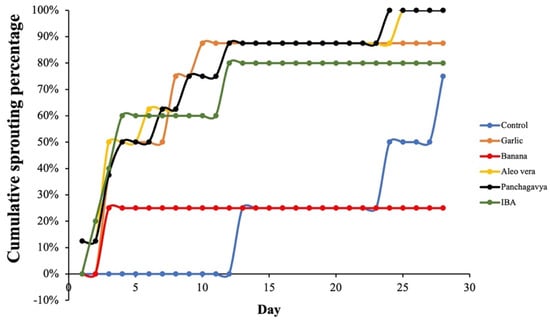The State-of-the-Art Propagation and Breeding Techniques for Horticulture Crops
A topical collection in Horticulturae (ISSN 2311-7524). This collection belongs to the section "Propagation and Seeds".
Viewed by 22175Editor
Interests: horticulture; fruit crops; post-harvest; fruit ripening
Special Issues, Collections and Topics in MDPI journals
Topical Collection Information
Dear Colleagues,
Horticulture has established its importance in many aspects of innovation, improving land use, promoting crop diversification, generating employment, and providing food for the world’s population. Thus, innovations in plant propagation and breeding are essential to meet the requirements of global changes, such as population growth and climate change.
Over the years, horticulturists have developed several propagation methods which have supported breeding programs and allowed for the production of high-quality nursery plants and higher crops.
Traditional breeding is one of the main strategies used to improve agronomic traits. In many horticultural species, several cultivars have been developed through conventional methods, such as mutagenesis, inter- and intra-specific crosses, and clonal selection. Conventional breeding is a long-term and expensive process; a long period of time and resources are needed to obtain progenies and to evaluate their traits. In addition, sexual breeding is not always feasible because some cultivars to be used in crosses are incompatible, sterile, or polyembrionic. Moreover, in many cases, after breeding, backcrosses are required to recover elite features of the improved cultivar, further lengthening breeding programs.
Since the 1990s, new biotechnology techniques have been applied to the propagation and breeding of horticultural species, providing efficient alternatives to traditional methods for the improvement of novel cultivars. This has been possible through the development of transformation protocols starting from many sources of explants. More recently, a number of new techniques have been developed and classified as new plant breeding techniques.
This Topical Collection, titled “The State-of-the-Art Propagation and Breeding Techniques for Horticulture Crops”, aims to gather the main recent advances in new horticultural propagation and breeding methods. We encourage researchers and experts to submit high-quality manuscripts related to the above-mentioned topics to this Topical Collection, which may include basic and applied studies.
Dr. Sergio Ruffo Roberto
Collection Editor
Manuscript Submission Information
Manuscripts should be submitted online at www.mdpi.com by registering and logging in to this website. Once you are registered, click here to go to the submission form. Manuscripts can be submitted until the deadline. All submissions that pass pre-check are peer-reviewed. Accepted papers will be published continuously in the journal (as soon as accepted) and will be listed together on the collection website. Research articles, review articles as well as short communications are invited. For planned papers, a title and short abstract (about 100 words) can be sent to the Editorial Office for announcement on this website.
Submitted manuscripts should not have been published previously, nor be under consideration for publication elsewhere (except conference proceedings papers). All manuscripts are thoroughly refereed through a single-blind peer-review process. A guide for authors and other relevant information for submission of manuscripts is available on the Instructions for Authors page. Horticulturae is an international peer-reviewed open access monthly journal published by MDPI.
Please visit the Instructions for Authors page before submitting a manuscript. The Article Processing Charge (APC) for publication in this open access journal is 2200 CHF (Swiss Francs). Submitted papers should be well formatted and use good English. Authors may use MDPI's English editing service prior to publication or during author revisions.
Keywords
- vegetables
- fruits
- medicinal plants
- ornamental plants
- sexual and vegetative propagation
- breeding techniques
- molecular biology
- plant transformation
- RNAi
- genetically modified organism















